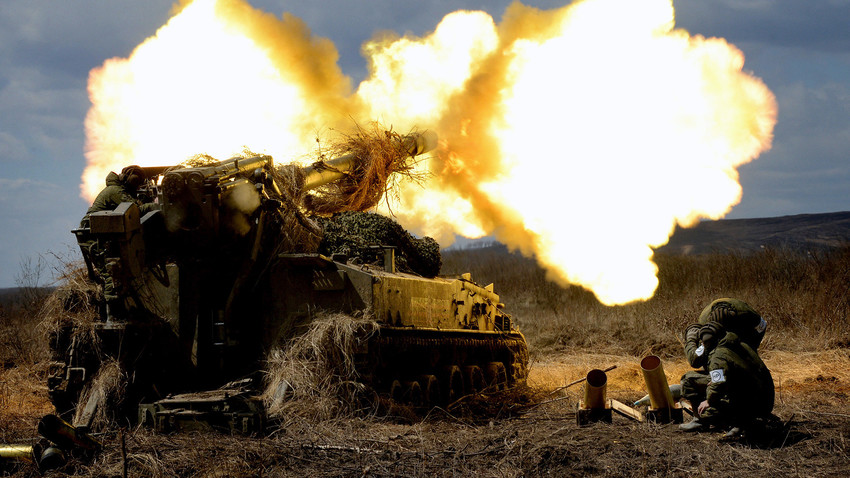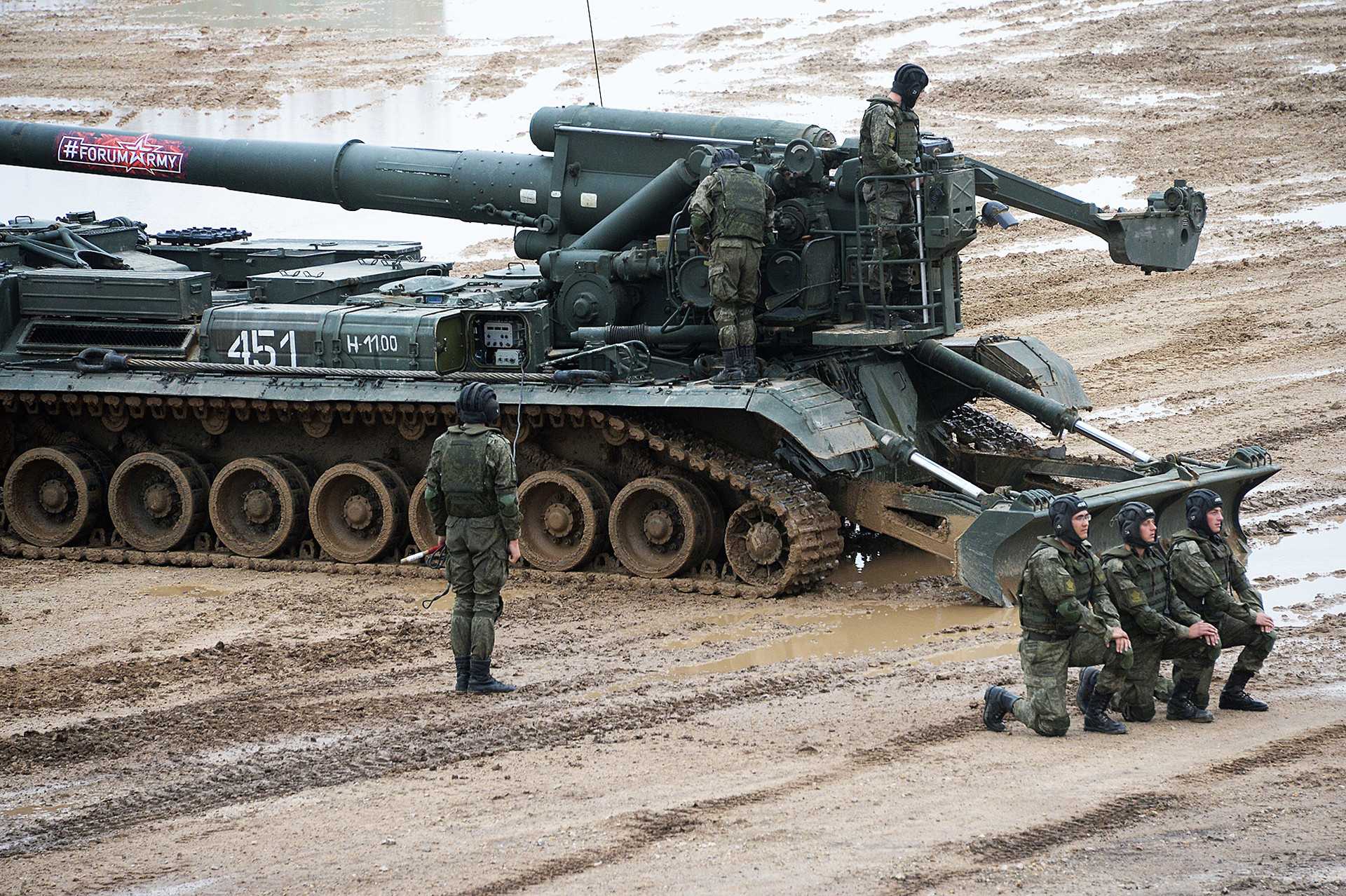Top 3 Russian artillery systems

The 2S5 Giatsint 2S5 self-propelled guns shoot during a joint drill of the 5th Combined-Arms army of the Eastern Military District supported by the army aviation, bombers, fighter jets and long-range aircraft with Airborne Force units participation held at Sergeyevsky base in Primorsky Territory.
Vitaliy Ankov/RIA Novosti
The Koalitsiya-SV is set to replace the 2S19 Msta-S howitzer that’s been used by the Russian military since 1989. The new system boasts 52 caliber, 152 mm cannons. They’re equipped with muzzle breaks that reduce the huge recoil from the guns, which can shoot at virtually any angle.
Iliya Pitalev/RIA NovostiThe Koalitsiya-SV is set to replace the 2S19 Msta-S howitzer that’s been used by the Russian military since 1989. The new system boasts 52
But more importantly, the weapon has a fire rate of 16 rounds per minute: That’s twice as much as most modern battle tanks can manage.
The Koalitisiya-SV’s main weapon is a 152 mm high-explosive shell, while it can also be armed with laser-guided Krasnopol projectiles that use satellite navigation for precision. The first war machines will join the Russian army’s ranks by 2020.
2S7 Pion

Servicemen are at the 2S7 "Pion" (S7M "Malka") 203 mm self-propelled cannon during the Polite People show as part of Third International Military-Technical Forum Army 2017 held in the Moscow Region.
Kirill Kallinikov/RIA NovostiDuring the Cold War, both
The 2S7 Pion can carry up to four 203 mm shells (which is pretty low compared to other artillery systems) that can eliminate targets at a range of 37.5 km.
“After the first successful nuclear
As he mentioned, these tests proved the tactical nuclear weapons to be ineffective, and the Pion artillery system received conventional 203 mm projectiles, instead of mass destruction ones. However, the shells still made the artillery system one of the most powerful in the 20th century.
2S5 Giatsint-S

The 2S5 Giatsint 2S5 self-propelled guns shoot during a joint drill of the 5th Combined-Arms army of the Eastern Military District supported by the army aviation, bombers, fighter jets and long-range aircraft with Airborne Force units participation held at Sergeyevsky base in Primorsky Territory.
Vitaliy Ankov/RIA NovostiThe 2S5 Giatsint-S is another Soviet innovation created to fire nuclear projectiles.
But unlike Pion, this system was charged with 152 mm rounds that could reach up to 28 km. It also carries up to 30 high-explosive shells and can also use heat, cluster, and smoke missiles.
In addition to heavy weapons,
If using any of Russia Beyond's content, partly or in full, always provide an active hyperlink to the original material.
Subscribe
to our newsletter!
Get the week's best stories straight to your inbox